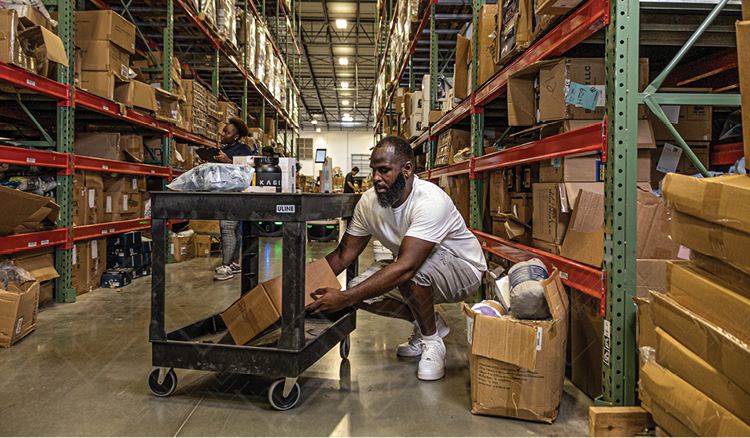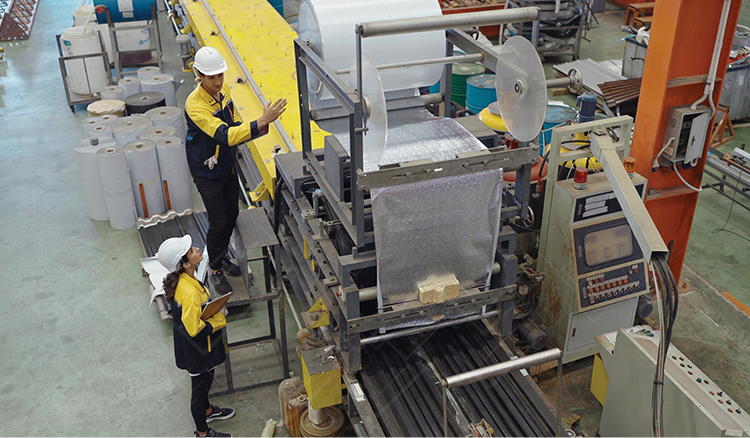Resurgence of Labor Unions: Factors, NLRB's Role, UAW Strike, and Perspectives from Veryable
In recent times, there has been a remarkable increase in the prevalence of labor union activities and strikes. High-profile corporations like Amazon, Apple, and Starbucks have been at the forefront of union campaigns, and most recently, the United Auto Workers ("UAW") are striking against major U.S. automakers, thrusting unions into the spotlight.
According to a press release from the National Labor Relations Board ("NLRB"), there has been a substantial uptick in the filing of union representation petitions in fiscal year 2022, reaching the highest level since 2016, with a remarkable 53% surge compared to 2021. Additionally, the number of petitions leading to actual union elections has seen a significant rise in 2022, totaling around 1,250 elections, which represents a 50% increase compared to 2021. Notably, workers have voted in favor of unions in nearly 75% of these elections, reflecting an improvement from the roughly 60% in 2021.
So, what is fueling this notable increase in union participation? How does the process of unionization unfold? And what about the UAW strike? This article will delve into the world of labor unions while lastly examining the perspective of Veryable, the global leader in on-demand labor.
The Resurgence of Unions: Why Now?
The uprise in union organizing efforts may seem surprising to some, especially when we consider that labor unions have often been portrayed as dwindling in influence (estimated 10.1% of the total workforce). So why are we hearing so much about them? Some of the factors that have contributed to this renewed interest in unions include:
- Pro-Union Stance of the Biden Administration: The Biden administration has publicly supported union organization, a role typically avoided by prior presidents ("The most pro-union president you've ever seen" - Joe Biden).
- Pro-Union Appointments: The Biden administration appointed pro-union advocates to key federal agencies, such as Jennifer Abruzzo, the General Counsel of the NLRB. These appointments have played a significant role in shaping the current labor landscape.
- Media Coverage: The media has played a role in romanticizing and publicizing union efforts. This increased visibility has led more employees to embrace the idea of unionization as a means to address workplace issues like low wages, lack of benefits, and poor working conditions.
- Younger Generation Support: The shortage of workers to fill available jobs and the activism of younger workers has also become a boon to unions. There is a new generation of younger professionals and service workers who are less likely to put up with unfavorable working conditions and who are learning that they have a stronger voice in an economy where employers are desperately fighting to fill positions.
The NLRB's Influence on Union Activities
As those who have dealt with union issues in the past know, the NLRB has authority over all aspects of the company-union relationship, from the initial union organizing process to collective bargaining if a union is chosen and then to individual employee protection for engagement in union activities. Each one of these areas of the law has been targeted with pro-union initiatives by the NLRB in recent months.
Union Formation and Meetings: The journey towards unionization within a workplace begins with the spark of employee interest and the subsequent engagement in organizing activities. These activities can range from casual conversations in parking lots to formal meetings, culminating in the collection of signatures on union representation cards. Companies have a variety of legally permissible responses to these activities, with one common approach being the convening of employee meetings. However, it's essential to note that such meetings, often referred to as "captive audience meetings" by the NLRB have faced legal scrutiny due to concerns of potential intimidation and coercion. Recent developments have seen legal challenges by companies and industry groups against the NLRB's stance on these meetings, although these challenges have yet to yield success.
Collective Bargaining and Scheduling: Upon successful unionization through a majority-vote election, a company's responsibility shifts to engaging in negotiations to establish a collective bargaining agreement (CBA). This process mandates that companies bargain in good faith, involving scheduled meetings with union representatives, thoughtful responses to union proposals, and the avoidance of unilateral changes to employment conditions. Allegations of bad faith bargaining, including neglecting meetings or engaging in superficial negotiations, have arisen against companies. In recent months, the NLRB has taken an assertive stance by compelling companies to adhere to pre-established schedules for union meetings—a rarely used remedy in the past but indicative of the Board's pro-union outlook.
Protected Union Activity and Employee Discipline: The National Labor Relations Act shields individuals engaging in "protected concerted activity" from adverse employment actions. This protection extends to both unionized and non-unionized workers. Examples of protected activities include discussing wages, addressing employment concerns with employers, and participating in work stoppages related to labor issues. Historically, the NLRB excluded specific behaviors, like threats and harassment, from protected activity.
However, recent developments have broadened the boundaries of protected conduct. A recent NLRB decision has reinstated overturned legal standards, allowing assertive or profane behavior during heated labor disputes to qualify as protected activity. This has placed employers in the challenging position of applying different standards for addressing offensive employee behavior depending on the context of labor-related disputes.
The UAW Strike and Its Implications for the Economy: A Complex Road Ahead

Presently, over 143,000 workers in the automotive sector finds itself embroiled in a labor strike due to the expiration of their contracts with the major American automakers, namely Stellantis, GM, and Ford. The potential ramifications of these actions could send ripples throughout the economy, casting a shadow over the Federal Reserve's imminent deliberations on interest rates.
According to a recent analysis by economists Michael Pearce and Nancy Vanden Houten from Oxford Economics, "The consequences of such a scenario could obscure economic data in the coming months, making it more difficult for the Federal Reserve to decisively interpret the data in one direction or another." This situation might, to some extent, bolster the argument for a temporary pause in interest rate adjustments.
If the UAW strike persists, Oxford Economics estimates that motor vehicle production could decline by approximately 30%, potentially acting as a drag on quarterly economic growth. Additionally, the temporary absence of workers from their roles could impact the October monthly payroll report in a manner akin to how the Hollywood strikes affected payroll figures in August. Furthermore, diminished automobile production could drive up vehicle prices, introducing a potential upward pressure on overall inflation.
Economists at Goldman Sachs have identified the strike as one of three factors contributing to a possible slowdown in the U.S. economy during the final quarter of 2023, characterizing it as a potential obstacle for Q4. As we navigate through these turbulent labor dynamics, the intersection of union strikes and their influence on the economy remains a pivotal and uncertain factor in the nation's economic trajectory."
Veryable and Unions
At Veryable, we maintain a neutral stance when it comes to unions. Our primary objective is to efficiently and effectively address the labor demands of businesses, regardless of whether their workforce is unionized or not. We do not hold any specific bias or viewpoint; our sole aim is to resolve the immediate labor challenges faced by our business patners.
Recognizing the Legitimate Goals of Unions: Veryable understands that unions aim to protect full-time positions for their members, and it has no intention of challenging these principles of unionized labor. Moreover, the focus is not on traditional "jobs" in the conventional sense. If unions genuinely seek to improve the working conditions of their members, Veryable's solution should be embraced. Concerned about forced overtime for union members? With Veryable, that concern becomes a thing of the past. Furthermore, having an additional set of hands available during a shift can always be advantageous.
Proven Success with Unionized Workplaces: Our track record includes successful collaborations with unionized workplaces. Numerous businesses, all of which employ unionized workforces, have discovered the value of utilizing the Veryable Platform to enhance productivity and reduce overtime expenses. These case studies highlight the potential benefits of our model even within unionized settings.
A Partner During Union Strikes: In the event of a strike by a unionized workforce, Veryable can play a crucial role as a partner for businesses. Why? Because we have a history of doing so, working alongside companies to develop contingency strategies that ensure critical operations continue uninterrupted during union strikes.
Conclusion
The labor landscape in the United States is evolving, marked by the resurgence of labor unions and an uptick in strike activities. This transformation is driven by a blend of political, societal, and economic factors. Veryable, a global leader in on-demand labor, maintains a neutral position regarding unions. The company's primary focus is efficiently addressing labor needs, whether a business's workforce is unionized or not. Veryable acknowledges the legitimate objectives of unions and has a history of successful collaboration with unionized workplaces. The company's support during strikes and its cooperation with union shops play a pivotal role in ensuring the uninterrupted continuity of its essential operations and effectively addressing labor-related challenges that may arise in such situations.
Previous Posts
How Policy Constraints, Not Just Production Bottlenecks, Threaten Your Bottom Line
The Future of Manufacturing and Logistics
Create a free business profile today to explore our platform.






